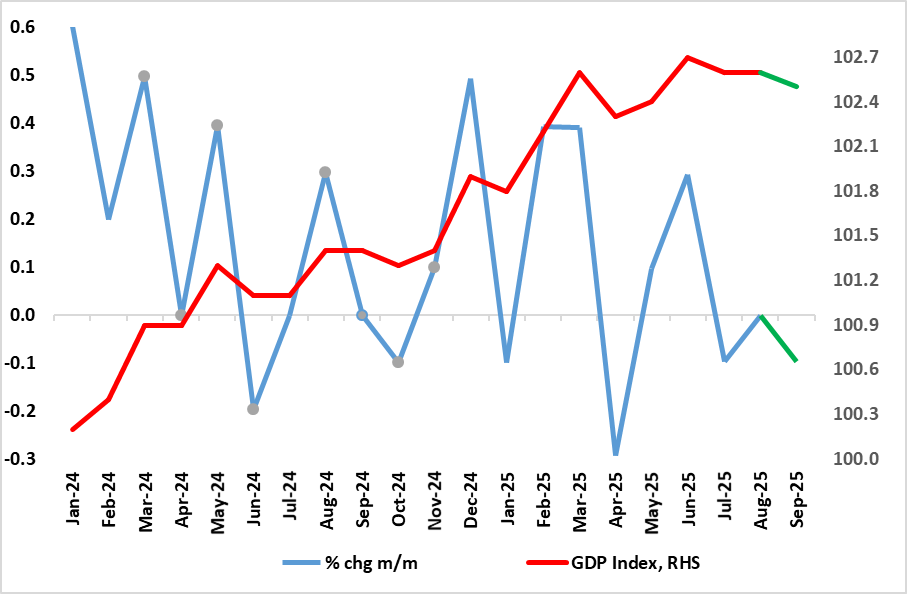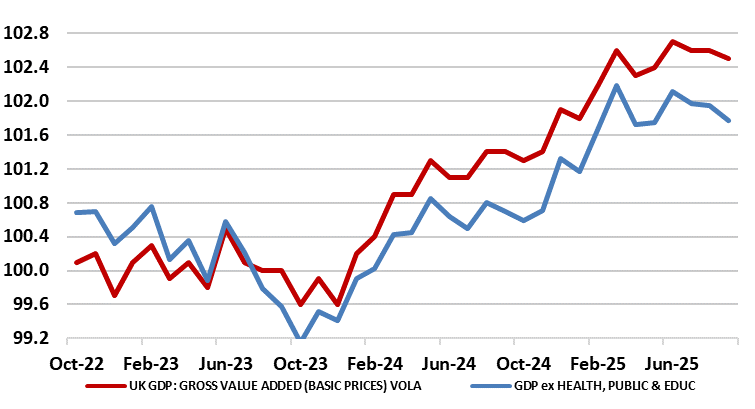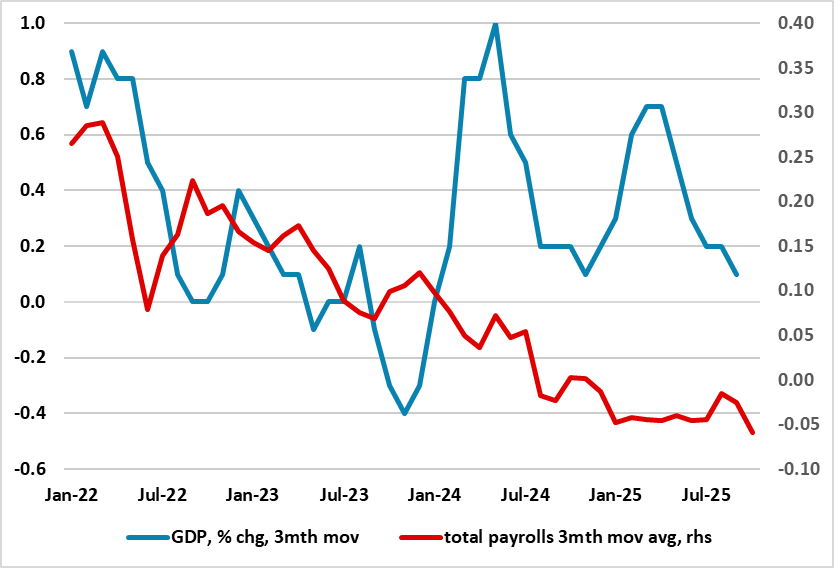UK GDP Review: Underlying Economy Listless - At Best
As we have underlined, GDP has hardly moved since March and, again, the latest update undershot consensus thinking. Indeed, GDP has fallen in two of the last three months (Figure 1), albeit where some recovery should be in store for the current quarter as these September numbers were hit (temporarily) by the cyber-attack at JLR vehicle manufacturing and by weather swings. As a result, and largely as we expected, September GDP dropped 0.1% m/m and with downward revisions evident. All of which meant Q3 GDP growth slowed to 0.1% q/q (Figure 2) partly due to a slightly perkier consumer performance but also a reflection of an inventory build which may prove involuntary and thus temper any current quarter recovery (which we see matching the Q3 result at 0.1% q/q). But as surveys still suggest, the economy is at best moving sideways, and maybe contracting based on labor market swings (Figure 3). GDP data is weaker than BoE thinking, thus adding to an already clear array of numbers undershooting MPC expectations, thereby encouraging easing speculation further.
Figure 1: GDP Growth Flatlining?

Source: ONS, CE
Revisions up to September GDP data now confirm small m/m falls in two of the last three months of data. This put the less volatile three-month rate at a 10-mth low of 0.1% (ie also equivalent to the Q3 result) which we think this reflects very feeble momentum, which may actually be nearer zero if not weaker at least according to some business survey data, especially once construction weakness is incorporated. Indeed, GDP has hardly moved since March. Admittedly, solid GDP outcomes early in the year suggest that UK GDP growth in 2025 will be around 1.4% - the highest in the G7 according to the IMF but this masks what is very much a weak(er) picture in per capita terms, this being a politically important issue amid current immigration issues. Indeed, the IMF see a cumulative growth of 0.9% for 2025 and 2026, the weakest in the DM would save for a similar soggy outlook for Germany. Regardless, the 0.8% GDP projection we have penciled in for next year actually constitutes some modest pick-up in activity momentum.
Figure 2: Private Sector Weakness Clearer?

Source: ONS, CE
To what extent better weather has helped prevent a more discernible weakening of late GDP is unclear. But gauging the economy is all the more difficult given both conflicting signals and the extent to which the public sector has supported growth and employment of late (Figure 2). The question is whether this latter factor will go in to reverse, sooner but probably later – health sector jobs already seem to be being shed. As for conflicting signals this is best highlighted by recent headline regarding service sector surveys but also where GDP data have diverged from jobs numbers (Figure 3) and where it is unclear whether the recent run of solid retail sales data are indicative of a better consumer trend or instead are missing a weakening that surveys have hinted at.
Figure 3: GDP Diverging Less Markedly from Weak Labour Market

Source: ONS, CE
I,Andrew Wroblewski, the Senior Economist Western Europe declare that the views expressed herein are mine and are clear, fair and not misleading at the time of publication. They have not been influenced by any relationship, either a personal relationship of mine or a relationship of the firm, to any entity described or referred to herein nor to any client of Continuum Economics nor has any inducement been received in relation to those views. I further declare that in the preparation and publication of this report I have at all times followed all relevant Continuum Economics compliance protocols including those reasonably seeking to prevent the receipt or misuse of material non-public information.